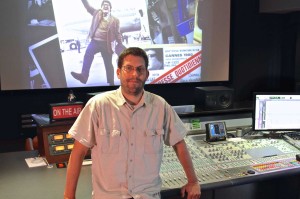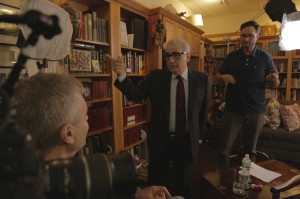
Filmmaker Steve James recently tapped Drew Weir and his colleagues at the Chicago-based sound design studio Another Country to handle the audio soundtrack for his new documentary Life Itself. Distributed by Magnolia Pictures, the film recounts the life of world-renowned film critic and social commentator Roger Ebert.
“Drew and his team at Another Country did a stellar and inspired job on our mix for Life Itself,” said James. “What I love about Drew is that no matter how granular we get about every detail of the mix, he’s right there with us, wanting to make it the very best it can be.”
“It was an honor to work again alongside Steve James, Kartemquin producer Zak Piper and composer Joshua Abrams on this amazing tribute to Roger Ebert,” said Weir. “Essentially, Steve wanted a big cinematic sound and score that complimented Roger’s character. Steve often relies on audio to build on emotion or tension in any particular scene; getting the sound consistent and clear was the primary task, but with Steve’s style of filmmaking, he really uses sound to bring the audience into the story.”
Weir’s project team at Another Country included executive producer Tim Konn, who served as audio post supervisor, as well as assistant sound effects editors Alison Ho, Josh Hunnicutt, Mike Regan and Louise Rider.

Facing a compressed schedule to finalize the film for its world debut at the 2014 Sundance Film Festival, Another Country delivered the film’s 5.1 cinema mix, a LtRt cinema mix, a stereo cinema mix, an unfilled marketing and entertainment mix and full stems.
Another Country began with audio captured as part of James’ production by Zak Piper, who also served as location audio mixer. Under Weir’s direction, sound design was performed using Avid‘s Pro Tools to support the visual story, including, for example, handling perspective shifts when movie clips moved from full-screen to being part of a TV show.
“After doing a lot of editing and cleanup to the production audio, we then added Foley and library sound effects back in to give certain scenes more detail,” Weir explained. “For instance, to allow the audience to feel the moment better in a particularly lonesome shot of Roger in rehab, the production sound was removed and the footsteps and gripping of the hand railing were put in just enough to work with the music score and compliment the picture.”
According to Weir, surround sound was used artistically throughout the film to envelop the listener in the music and ambiance but also as an effect in key places, like during the opening titles, when the sound of a film projector comes from behind the audience as if it’s coming from a projection booth. Weir created the final mix in Another Country’s Sound 4 studio, which presented the film on a large screen with a JBL theatrical sound system and a Dolby Cinema processor, and provided a large enough surround field to accommodate everyone who needed to be present for the final mix.
“I think Life Itself is a great example of how Another Country comes together as a team,” said Konn. “While Drew did all the dialog cleanup and final mixing, all of our assistants did an amazing job of spotting sound effects, Foleying sounds and helping build the different ambiances throughout the film. Our assistants volunteered to come in over the weekends and work really late nights to give Drew everything he needed to stay on schedule.”





